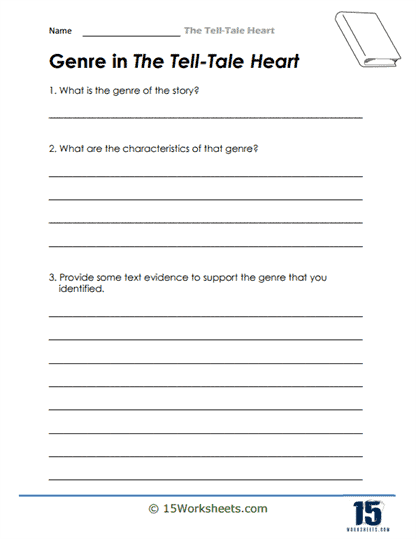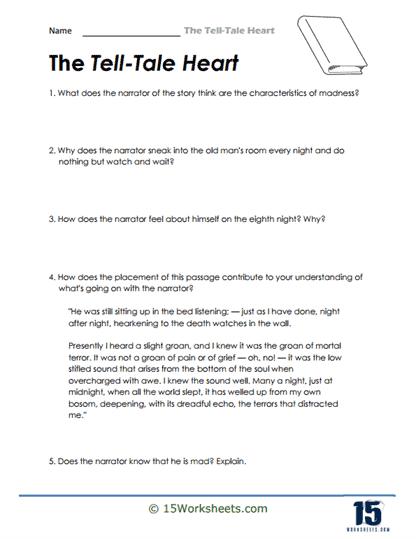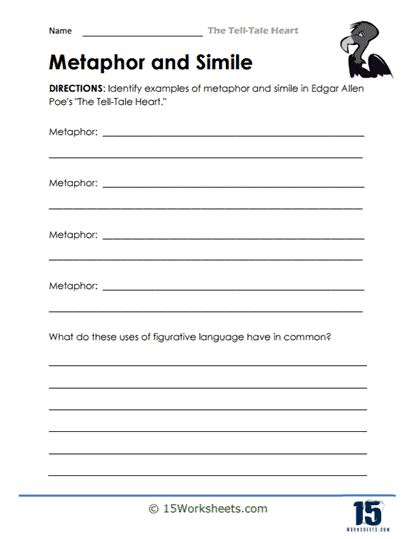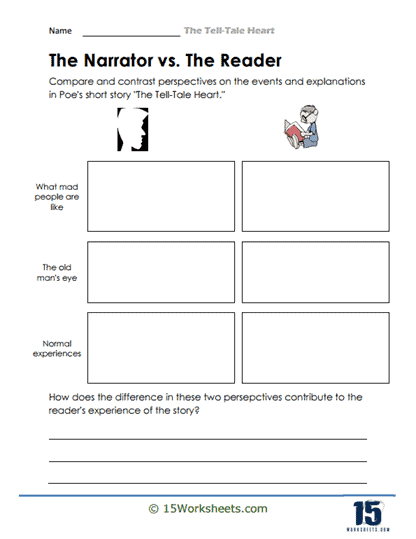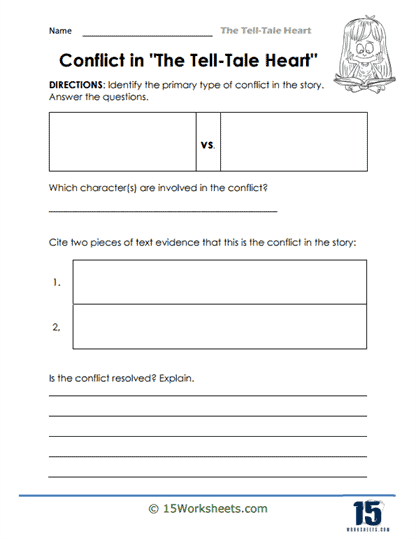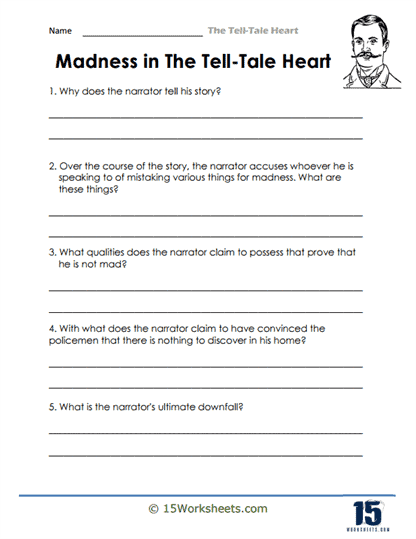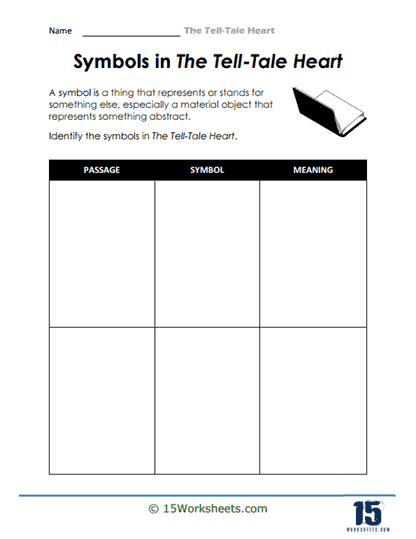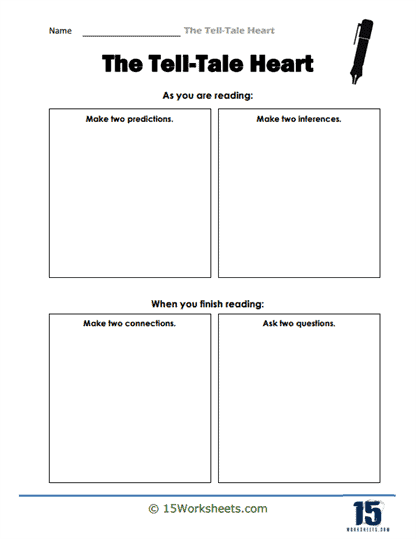Tell Tale Heart Worksheets
All About These 15 Worksheets
This collection of worksheets is an immersive educational resource designed to introduce students to the chilling world of Edgar Allan Poe’s iconic short story, “The Tell-Tale Heart.” Each worksheet is crafted to engage students in various aspects of the story, encouraging deep analysis of its themes, characters, and psychological elements. This resource is an invaluable tool for literature educators, fostering a love for classic literature and critical thinking skills.
The Importance of The Tell-Tale Heart
Edgar Allan Poe’s “The Tell-Tale Heart” is a literary masterpiece renowned for its exploration of the human psyche and its dark, suspenseful narrative. Delving into this tale in the classroom offers several key benefits to students:
- Literary Appreciation: Studying “The Tell-Tale Heart” introduces students to Poe’s mastery of suspense, vivid imagery, and psychological horror, deepening their appreciation for the art of storytelling.
- Exploration of the Human Psyche: The story delves into the depths of the narrator’s mind, allowing students to explore themes related to guilt, obsession, paranoia, and the consequences of one’s actions.
- Character Analysis: Analyzing the narrator’s character provides students with a unique opportunity to examine the unreliable narrator trope, fostering critical thinking and literary analysis skills.
- Literary Techniques: “The Tell-Tale Heart” is rich with literary techniques such as symbolism, foreshadowing, and irony. These elements offer a chance for students to dissect the text and understand the author’s craft.
- Psychological Exploration: The story’s focus on the psychological aspects of crime and guilt prompts students to contemplate the complexities of human behavior, empathy, and moral dilemmas.
- Language Proficiency: Poe’s eloquent and evocative language challenges students to expand their vocabulary and improve their reading comprehension skills.
This collection of Tell Tale Heart worksheets is a valuable resource that empowers educators to introduce Edgar Allan Poe’s classic short story to students in an engaging and thought-provoking manner. By delving into the story’s themes, characters, and psychological elements, students not only develop a deeper appreciation for literature but also gain insights into the complexities of the human mind and moral decision-making.
This collection equips educators with the tools needed to guide students on a literary journey that fosters critical thinking, empathy, and a lasting appreciation for the works of Edgar Allan Poe.
About the Tell Tale Heart
“The Tell-Tale Heart” is a short story written by Edgar Allan Poe, first published in 1843. The story is a psychological thriller and a prime example of Poe’s signature Gothic fiction style, characterized by elements of horror, suspense, and the exploration of the darker aspects of human nature.
Narrated in the first person by an unnamed protagonist, “The Tell-Tale Heart” tells the story of a man who commits a murder and then becomes consumed by guilt and paranoia. The narrator insists on his sanity, despite admitting to having a disease that heightens his senses, particularly his hearing. He becomes obsessed with the old man he lives with, particularly the old man’s “vulture-like” pale blue eye.
Driven by his obsession and convinced that the eye is evil, the narrator decides to kill the old man to rid himself of the eye. Over several nights, he carefully sneaks into the old man’s room to observe him while he sleeps. On the eighth night, the old man wakes up and, sensing an intruder, remains still in his bed. The tension mounts as the narrator waits in the darkness, hearing the old man’s increasingly rapid heartbeat, which he interprets as the beating of his own heart.
Finally, unable to bear the suspense, the narrator attacks and kills the old man, dismembers the body, and hides the remains under the floorboards in the bedroom. Later, the police arrive, having been alerted by a neighbor who heard a scream. The narrator, confident in his ability to deceive the officers, invites them in and even places his chair on the very spot where he concealed the old man’s remains.
As the narrator converses with the police, he begins to hear a faint, rhythmic sound that he believes to be the old man’s heart still beating. The sound grows louder, driving the narrator to the brink of insanity. Unable to withstand the guilt and the imagined beating of the heart any longer, the narrator confesses to the murder and demands that the police tear up the floorboards to reveal the hidden remains.
“The Tell-Tale Heart” explores themes such as guilt, madness, and the unreliability of the narrator. The story has been widely studied, adapted, and referenced in various forms of media, solidifying its status as one of Edgar Allan Poe’s most famous and enduring works.



